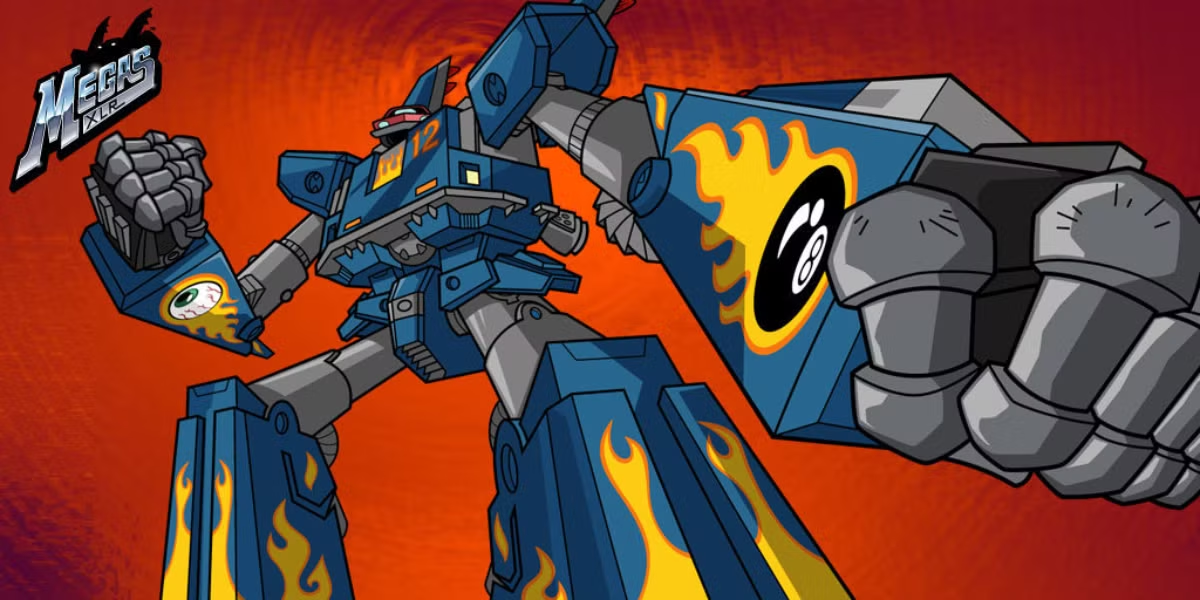Ah, I see you have a Kaiju infestation. They can be pesky and persistent vermin. So, you rolled out your air power, artillery, and heavy armor all within view of the creature and lit that bitch up. Then what? If it was Gojira— that’s Godzilla to you, me, and the rest of the English speaking world, your boys just got death-rayed on the spot. Other Kaiju started acting like your vehicles were all plushies stuffed with catnip.
Yeah, good plan.
Even the 1998 Godzilla movie, which handled this a tad better, loused up a lot. For instance, who runs AH-64 Apache helos between buildings in a ground attack mission? Is it any wonder that Gojira downed all three in a severe game of fetch?

But ahh, I hear you saying, what about the A-10 Thunderbolt? That airframe includes armor for the pilots and other critical areas. Hmm, sure, good point. The titanium “bathtub” that nestles the cockpit and Kevlar coating can take a lot. But no one’s tested it against atomic breath. Turn the temperature up high enough and everything burns.

Military jet airplane designed for close support of ground troops. Built from 1977-1984.
Cue fictional testbeds, like Super Wing X!
Hold up my hands visible shaking with restrained frustration.
A lot of Kaiju tend to hurl projectiles or spew energetic emissions. If your fast movers, that is your fighter jets, are getting cooked chances are the bigger, slower, and easier-to-hit super-duper air frame is toast. Stripped down for light weight or up-armored and slowed even more doesn’t make a difference. The mistake made is why fire from that close a range. NATO countries and Japan have had the ability to strike from 50,000 to 70,000 feet up for a few decades.
An important principle is to never fix a simple problem with a complex solution, if you can help it. That, at times, conflicts with engineer’s logic, but this is why some modern military projects emphasize feedback from the troops who have to use fuckin’ thing. Accuracy, precision, reliability, ease of use, and of maintenance will thwart bells and whistles almost all the time.
This take us back to what’s in the arsenal now. Most movies have Kaiju just showing up without knocking. Side note: Tokyo, whatever that is serving as Kaiju attractant in your city, hunt that shit down and throw it out.
Back to the arsenal problem. Normally, we’d secure the airspace over the site. However, there’s the occasional flying Kaiju that somehow turns on a dime despite being two or three football fields wide, and snags fast movers out the air like a trained falcon. Then there are your ground variety that can take down air units with better accuracy than some air defense platforms. Yeah, I’m talking at you, Russian Buk-M3 and S-300 crewmen.

Recent events of a country being devastated also show that you need a good ground game. So, let’s start with the biggest offense in Kaiju movies: arty. Gun artillery systems should be miles away from the target, and missile artillery needs to be even further. If you can pick out what you’re shooting at using binoculars you’re already in trouble. Your reconnaissance teams and scout companies are supposed to be the eyes. Since they risk being stomped on a good recon team should be small, fast, and hard to see. If you have to fire at closer ranges, get the right tool for the job, tanks.
However, even with tanks, the basics of the Defense Onion still apply: Don’t get seen. If seen, don’t get locked onto. If locked onto, don’t get fired on. If fired on, don’t get hit. If hit, don’t get penetrated. If penetrated, don’t die. Now Kaiju don’t have target acquisition sensors or targeting computers, Mechagodzilla notwithstanding, but with everything else they bring to the fight you’re down to don’t get seen or fired on. If it sees you you’re cooked, period.
On that note, tankers, you’ll probably wanna sit this one out. Kaiju tend to shake off HE shells, rockets, and missiles like irritating gnats. The famous, and exclusively fictitious MASER cannons merely aggravate the giant behemoths. Godzilla took a nuke to the face.
There was a time I’d have doubted that a modern professional military would lose to wildlife, but then I learned of when the Australian army had an artillery duel against emus and lost. Life finds a way to put a boot up your ass.
One seeming clever answer was the use of Cadmium missiles, but really, we don’t have six months for the Kaiju to succumb to nerve damage and organ failure. Plus, it didn’t work anyway. Just created some white residue on Godzilla and he even gnawed on one to no lasting ill effects.
That leads me to another complaint. Don’t none of y’all have fin-stabilized Sabot rounds? The volume of fire clearly isn’t doing you any favors. Ya gotta go with high penetration, and nothin’ says stick it in and break it off like a depleted uranium projectile that screams massive medieval dart. Other DU rounds famously are used in the A-10’s 30 mm GAU-8 cannon, but consider what these things take above that. A prolonged BRRRRT might give us apes a moment of pause, but that’s less than BB caliber to Kaiju.
Just how is that living organic animals manage to have such armor in the first place?
Kaiju anatomy and physiology seems to break physics and chemistry, let alone biology, so let’s look at what’s going on there. Gojira has been depicted as possessing a body temperature of several hundred degrees Celsius, and yet his body fluids don’t boil. I’ll skip the fact he gives off rads, because that’s not the first time nature created a nuclear reactor, though it would be the first in a living organism. Yet, heat and liquid water disparity is an issue we can’t ignore.
To keep water in a liquid state at higher temperatures would require higher pressure acting on internal tissues. And there’s our exploit. The fact Kaiju are so large in a world that no longer supports land animals as large as sauropods like Brachiosaurus and Titanosaurus- the real one, not the Kaiju, suggests a new trick in evolution. Retaining such pressures inside their bodies means a lot of chemistry has been altered. Be it muscle fibers or some sort of carbon nanotube secretion that keeps cells and tissues from bursting from flash boiling under such heat.
Whatever the case if a Kaiju defense force manages to get even a tiny hole in the creature physics could do the rest for us. A wound under intense pressure could swiftly rip right open with blood and flesh exploding out. What’s more, maybe killing the Kaiju outright isn’t even necessary. How debilitated are you when a thorn stabs under a toenail?
Animals have to avoid injury to survive. This is especially true of predators, who are most often risk-averse compared to their prey. Sure, Kaiju can appear to acquire energy from nuclear sources, but that biomass has to come from ingesting something solid. The spiky teeth aren’t there just to be intimidating. The ability to get around and grab ahold of their food requires mobility.
I don’t know where the debate is on whether Kaiju have just animal level intelligence or if they exhibit god-like intellect and are simply unknowable in their primordial consciousness, but much of their behavior is closer to primal. The line from Harry Dean Stanton comes to mind from the movie Alien: Maybe we can’t kill the creature, but enough of an injury gives the thing an incentive.
And, really, what do we want of these Kaiju? Stop stumping our cities of the world is the first and most visible demand. Constantly rebuilding a nation’s capital would ruin said nation-state. However, pouring untold billions or trillions into killing these monsters just to have them reanimate or retreat to wreak havoc again also is a medium and long term failure. To say nothing of the lives lost, military and civilian. Atop it all, each organism has an adverse individual-based ecological impact not seen since the lesser known King Ghidorah; Jeff Bezos, Rex Tillerson, and Rupert Murdock.
Volume of fire clearly hasn’t solved our problem, and maybe even hyper-precision munitions won’t either. Can soft-kill measures work? Many animals are sensitive to man-made phenomena we take as innocuous. Bats are driven into a panic by tearing paper. Bear spray is more severe to bears than to us because of their thousand-fold better sense of smell. Pentagon projects like directed sound and millimeter bandwidth microwave weapons trigger the most basil self-preservation instincts in people and animals alike.
The 1984 Gojira/Godzilla movie tangled a promise that was never revisited. Gojira became enamored by seagulls. The most common lore for Gojira is that he’s a mutated upright-walking tyrannosaur that somehow survived the K-Pg Extinction Event that wiped out non-avian dinosaurs. Ignoring all the scientific questions behind accelerated non-cancerous growth and regaining two fingers— theropods and their avian descendants only ever had three to begin with, this justifies the depiction of Gojira taking an interest in bird calls.
Now at such extreme size there’s no reason for an animal to have high pitches, or even calls above infrasound really, but being a mutant of a smaller form maybe Gojira can hear higher frequencies. Skipping the social or solitary tyrannosaur debate, we have to take the observation of Gojira taking interest in birds seriously in order to control the battlespace.
We find or develop our soft-kill weapon system to hamper or harm the Kaiju and then find where we want to deploy it to maximize effectively and minimize risk to populated areas as well as the ecology they make their living from. As of 1998, we know Gojira has an anti-submarine capability like nothing on this Earth. That makes him dangerous in all mediums, but the counter is size. An environmental activist once said don’t try to beat a rhinoceros by being a rhinoceros. You beat it by being a mosquito. There is no chief mosquito and they come in endless numbers. We come to the answer that allowed a country with no navy to take out the pride and joy of the Black Sea Fleet.
Drones, baby!
Small, unmanned, and often cheap, drones are how you deal with Kaiju. Some UAVs to serve as bait while UCAVs to deliver the attack. Whether it’s flying heedlessly into contested airspace or even a hundred kilometers deep into a hostile regime to toe-tag infamous terrorist leaders, drones have come into their own.
The 21st century had forced the rewrite of many a battle doctrine, some of which stood for centuries. Yet, like natural selection only the most adaptive will survive to pass on their traits. The Rand Corp study established the numbers ratio an occupying army needs for varying degrees of internal resistance, forever shattering the light and fast model of regime change. Except we’re on defense with Kaiju, and going big has always failed us. Nimble and fast machines that, when taken out, don’t add to lives lost have yet to be tried. The only limit to what a drone can do and through what medium is nigh-limitless.
What’s crucial is that all our hopes won’t fall on a single machine that has a coin’s toss chance in the hells created by rampaging Kaiju. Drones are the pinnacle of classic U.S. Army thinking; fight smart so that you don’t have to fight hard.
There are no fair fights in war or in nature, so it behooves us clever apes to cheat.





